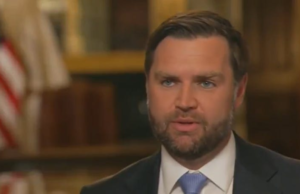What the Wellness host Ella Dove is sitting in a chair looking at a screen projecting images of her hair. It’s not a sexy Pantene commercial involving lustrous lengths and a bouncy tune. It’s her scalp…under a microscope…and there is dust. Why has this video garnered nearly two million views on YouTube? It’s the same answer to the question, “How did Dr. Pimple Popper become a cultural fascination?” or “Why are people extracting ingrown hairs on my Explore page?” On our way to the flawless, filtered perfection that we’re willing to show on Instagram, we want to know that others are struggling with accepting their skin as it is—because we often are, too.
“I think there’s a natural human attraction to things that are ugly, gory, and devastating,” says Dove, Well+Good’s former director of creative development. “We drive by a car crash and rubberneck, for example. I think gross bodily functions are the same thing, and capturing it on camera is the same psychological phenomenon. We want to see what’s gross even though we want to look away.”
According to Josie Howard, MD, a physician specializing in dermatology and psychiatry, Dove’s thesis is right on the money, likening these videos to the effect of horror films. “When we think about why people are drawn to horror films, there’s a cycle of anticipation, excitement, adrenaline release, followed by a sense of relief and safety or even mastery of having endured the fear,” she says. “Watching a medical procedure that is usually deemed off-limits can initiate a similar cycle of emotional and physiological responses.”
The advent of the pimple pop and gross beauty
If you scroll all the way back to the beginning of Dr. Pimple Popper’s YouTube, her feed doesn’t begin with puss erupting through a pore. It’s a lot of technical derm stuff, but around 2016, she found her niche. Coincidentally (or not), this is around the same time that Google searches for “pimple-popping” start to take off. Sandra Lee, MD, known as Dr. Pimple-Popper, is famous for making social media videos that feature her extracting various types of skin blemishes, including blackheads, cysts, and lipomas. These clips have accumulated millions of views, turning her into an internet sensation and even resulting in her own TV show.
“I started posting on Instagram to show people a glimpse of what my specialty is really like. Early on, I posted a blackhead extraction video that got a lot more attention than my other posts,” she says. “People were commenting that the video was grossly satisfying, disgusting or that they were fascinated.” Her community either loved what she did or hated it (rarely was there a middle ground), but either way, they tagged their friends, and Dr. Pimple Popper rose to fame. “My underlying intent was to entertain viewers but to secretly educate them as well,” she says.
This phenomenon extends beyond pimple popping. Similar content, like earwax removal, toenail clipping, and knuckle cracking has also gained popularity. There is a universal curiosity about the human body and its imperfections, and the internet has provided a platform for this curiosity to be explored.
“When we think about why people are drawn to horror films, there’s a cycle of anticipation, excitement, adrenaline release, followed by a sense of relief…Watching a medical procedure that is usually deemed off-limits can initiate a similar cycle”—Josie Howard, MD
Why do we watch?
Dr. Howard suggests a few reasons why “gross” beauty videos have caught fire. For starters, catharsis and release. “[These videos are] something that allow people a momentary escape from the stressors that come at us from every direction. It takes something sensationalized like the ‘gross-out’ videos to compete with the constant influx of news and information that floods our consciousness,” she says. In addition to this psychological escape we feel when a pore is scrubbed clean or a scalp is removed of debris, there’s also the component of community and normalization.
Sometimes, people with skin conditions can feel isolated or embarrassed, but watching others go through the same thing can help us to feel connected and less alone in our own skin-care journeys. “I think there’s something normalizing in seeing someone, especially a respected dermatologist, doing pimple extractions. Most people with acne occasionally pick at their skin without it being pathological, but there is often a great deal of shame attached to the activity,” says Dr. Howard. “By seeing pimple popping itself in the spotlight, it reduces the shame attached to the urge many people feel to pick at their skin.”
With this sense of community, however, Dr. Howard adds that it’s still important to have an arm of education, both in regards to why it’s often best not to pick at skin and also why a dermatologist’s office doesn’t have to be a scary place. Beyond the ‘gross-out’ factor, these videos also help to paint a more vivid picture of what dermatological procedures (or scalp cleaning, or chiropractor’s office, or ENT office) look like. Dr. Lee, for instance, explains the procedures she’s performing, which helps her viewers to understand what a certain skin condition is. Ultimately, this broad education can help to ease fears about seeking any kind of help when needed.
So, is there a downside?
There is. As with everything on social media, the person behind the phone plays into the equation when it comes to what they’re seeing on the scroll. That means that these videos will trigger some people with skin-picking or excoriation tendencies, which Dr. Howard says, “can harm the skin by causing scars and infection.” It’s worth noting that others with excoriation tendencies have been helped by these videos, which can act as a stand-in from picking their own skin.
Still, Dr. Howard explains that a good first step to combatting this is to place resources next to the content. “I would love to see information for psychological resources attached to all of these videos,” she says, pointing to the TLC foundation, which offers support for people with body-focused repetitive behaviors that can become problematic.
Beyond this, as a society, we need to continue to advocate for life beyond perfectly shared moments on IG—which arguably gross beauty does —and for what it’s worth, Dr. Howard believes we’re seeing improvement in this arena. “It’s wonderful to see celebrities actually talking about their skin issues and the emotional consequences of those, as well as seeing beautiful models with conditions like vitiligo in the spotlight for their transcendent beauty.”
Many of us can feel alone with whatever we’re dealing with, and as Dr. Howard sums it up, “using this platform to give voice to the emotional component of what it is like to live in imperfect skin—as we all do in real life—can be empowering.”
Check out Dove’s (admittedly gross) scalp facial for yourself:











